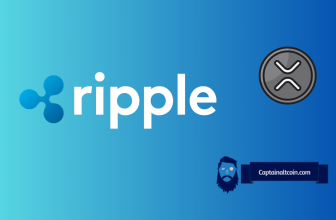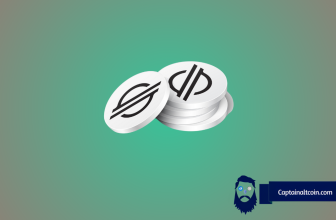
Coinbase and Circle announce their joint stablecoin, and BitPay introduces a settlement in stablecoins. How boring. Was that the vision of decentralised currency reform?
At the moment, one might think that the whole point of Bitcoin and crypto currencies would have been to become the platform for a digital dollar. After countless other stablecoins, Coinbase and Circle are now also announcing a dollar coin.
The “USDC Stablecoin”, according to Coinbase yesterday on its blog, “can now be bought, sold and received in selected jurisdictions”. So far, the selected jurisdictions have been limited to all US states except New York.
A USDC is, one experiences further, a 1:1 representation of a US dollar on the Ethereum Blockchain. Each USDC is fully covered by real US dollars, which are held in bank accounts and regularly audited. The “USDC underlying technology was jointly developed by Coinbase and Circle”. The two companies are partners and co-founders of the Centre Consortium. The Centre seems to specialize in stablecoins, but the information on the website is somewhat complex with white papers.
The advantage of such digitized dollars, Coinbase explains, is that “they are easier to program, quick to send, can be used in dApps and can be stored locally rather than in a bank account”. A good dollar stablecoin is “an important step towards a more open financial system”.
What are best altcoin trading bots?
That people use the ERC20 stablecoins for normal purchases is nonsense, of course. Ethereum neither has the necessary wallet infrastructure nor the necessary capacity. If Coinbase and Circle have this intention, the launch of the USDC would be a risky speculation that the Ethereum developers will solve problems that they themselves consider gigantic.
It is much more likely that Coinbase and Circle are trying with the USDC to compete with Tether: they want to establish “their” dollar as a counter currency to crypto currencies in trading. The USDC act less as a means of payment than as an instrument to determine the value of crypto currencies. Thanks to the popular ERC20 format, the USDCs can easily accumulate on decentralised exchanges based on the 0x model. For exchanges such as Coinbase, this would have the great advantage that they would no longer have to act as trustees for credit balances.
Another advantage of the ERC20 format would be that the USDC can be programmed to better meet regulatory requirements. For example, that certain transactions can be withdrawn or censored, or assets can be frozen. If this were implemented, the circle would be complete. The technical disruption caused by the blockchain is maintained, while the social revolution promised with hard, uncensored money ends.
The payment service provider BitPay also welcomes the trend towards stable coins. On 15 October, BitPay announces that it will also permit settlement in the Stablecoins Gemini Dollars (GUSD) and Circle USD Coin (USDC) with immediate effect. “Our customers can receive payments with Bitcoin or Bitcoin Cash and then receive them by bank transfer in their own currency,” BitPay explains the usual process of a BitPay payment.
However, customers who do not have a bank account supported by BitPay – especially in South American and Asian markets – can only receive their revenue in Bitcoin or Bitcoin Cash. “These crypto currencies are great for fast, cross-border payments, but they carry the risk of volatility. If prices change, it can hit companies that don’t have reliable access to crypto exchanges hard. With the new stablecoins, customers, wherever they are, can receive their revenue in a stable means of payment.
All this is, somehow, great, and of course legitimate. But, somehow, it’s also devastating. Technically, Stablecoins are parasites. They take resources from a blockchain, but don’t give it back, because the miners are not paid in stablecoins, but in native tokens. On the contrary: If a stablecoin displaces the native token, it reduces its value – and thus also damages the long-term stability of the blockchain.
In addition, quantity limitation is one of the most important properties of crypto currencies: one of the reasons why the supporters of stable money around the world have turned to Bitcoin. The idea was to successively push ahead with a decentralised currency reform that would provide the old, long-term unstable fiat money with new, quantitatively limited money. By now placing Coinbase, Circle and BitPay on the “stable coin”, the digital incarnation of the dollar, they are opposing the decentralised currency reform with a technical reform of the payment methods. That’s not bad either, but it’s also a little more boring.






